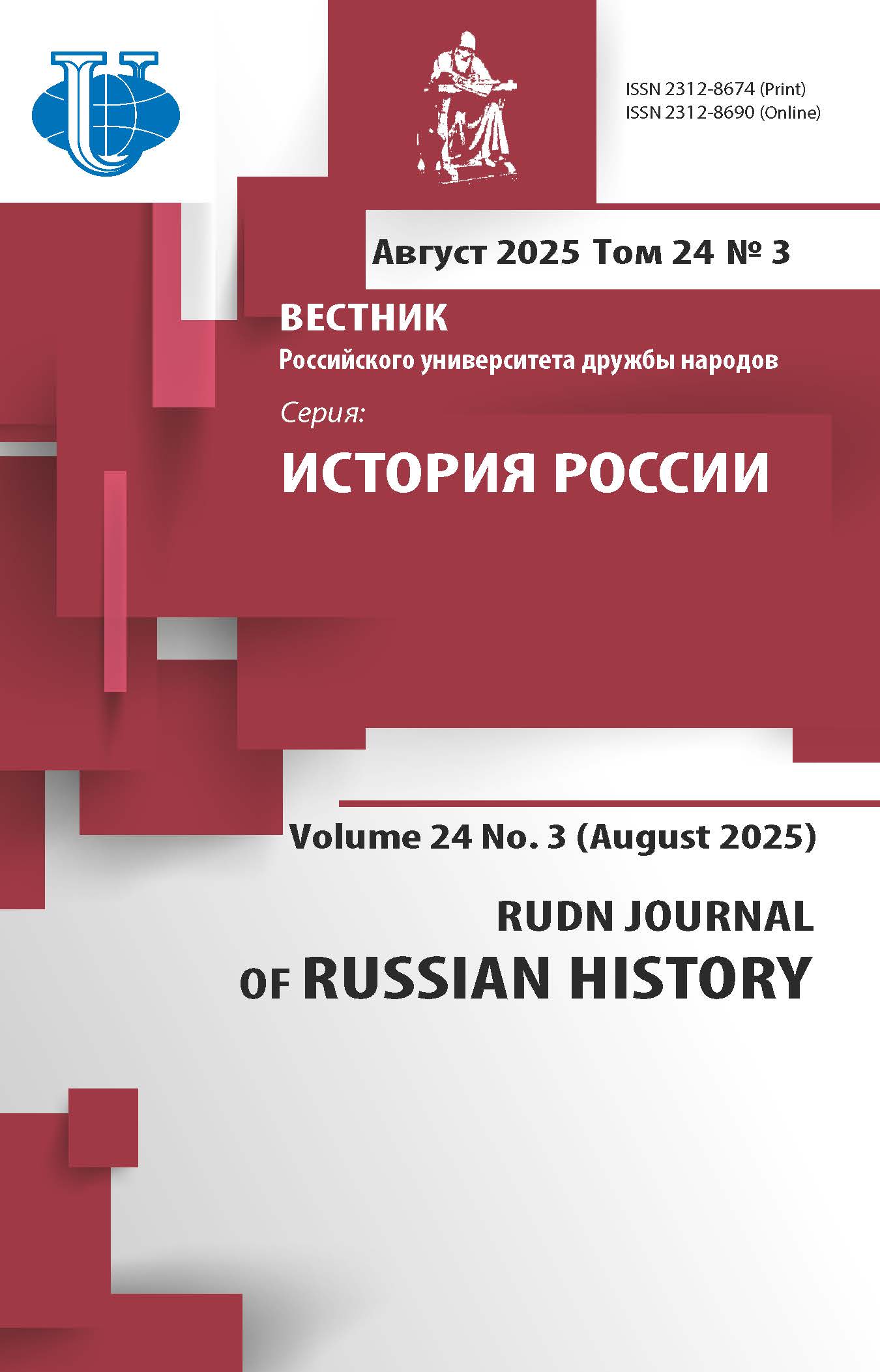НАЦИОНАЛЬНАЯ МОДЕЛЬ ВЫСШЕГО ОБРАЗОВАНИЯ В НЕМЕЦКОЙ АВТОНОМИИ
- Авторы: Гартвиг Б.В.1
-
Учреждения:
- Самарский государственный технический университет
- Выпуск: № 4 (2014)
- Страницы: 119-132
- Раздел: СТАТЬИ
- URL: https://journals.rudn.ru/russian-history/article/view/4257
- ID: 4257
Цитировать
Полный текст
Аннотация
В статье анализируется процесс создания системы высшего профессионального образования в Республике немцев Поволжья в 1920-1930-е гг. Автор рассматривает историю открытия высших учебных заведений для подготовки педагогического персонала для школ республики и мест компактного проживания немцев в СССР, а также профессиональных управленческих кадров для партийного аппарата республики, специалистов в сфере сельского хозяйства. Раскрываются трудности, с которыми столкнулись вузы немецкой автономии в период своей деятельности.
Об авторах
Бэлла Владимировна Гартвиг
Самарский государственный технический университет
Email: redwinter@rambler.ru
Кафедра социологии, политологии и истории Отечества
Список литературы
- Государственный исторический архив немцев Поволжья (далее ГИАНП). - Ф. Р-847. - Оп. 1. - Д. 348. - Л. 77.
- Там же. - Д. 260. - Л. 6.
- Там же. - Д. 348. - Л. 1,2.
- Там же. - Л. 55.
- Там же. - Л. 58.
- Там же. - Л. 5.
- Там же. - Л. 6.
- Там же. - Л. 51.
- Там же. - Л. 49.
- Трудовая правда. - 1930. - 6 января.
- Областное государственное учреждение «Государственный архив новейшей истории Саратовской области» (далее ОГУ ГАНИСО). - Ф. 1. - Оп. 1. - Д. 2392 а. - Т. 2. - Л. 69.
- Там же. - Д. 1802. - Л. 73.
- ГИАНП. - Ф. Р-847. - Оп. 1. - Д. 348. - Л. 13.
- Там же. - Л. 96.
- ОГУ ГАНИСО. - Ф. 1. - Оп. 1. - Д. 1802. - Л. 50.
- ГИАНП. - Ф. Р-847. - О. 1. - Д. 435. - Л. 154.
- ОГУ ГАНИСО. - Ф. 1. - Оп. 1. - Д. 2392 а. - Т. 2. - Л. 20.
- Там же. - Д. 4975. - Л. 6.
- Там же. - Д. 1802. - Л. 74.
- Там же. - Д. 1799. - Л. 469.
- Там же. - Л. 470.
- Там же. - Л. 471.
- Там же. - Д. 2392 а. - Т. 2. - Л. 58.
- Там же. - Д. 1802. - Л. 74. Ibid, d. 1802, l. 74.
- Там же. - Л. 71.
- Там же. - Л. 75.
- Там же. - Д. 2392 а. - Т. 2. - Л. 20.
- Там же. - Л. 62.
- Там же. - Д. 3457. - Л. 86.
- Там же. - Д. 2944. - Л. 31.
- Там же. - Д. 2929. - Л. 86.
- Там же. - Д. 3457. - Л. 72.
- Там же. - Д. 3902. - Л. 26.
- Там же. - Д. 3457. - Л. 73.
- Там же. - Д. 3904. - Л. 24.
- Там же. - Д. 3457. - Л. 67.
- Там же. - Л. 75.
- Там же. - Л. 76.
- Там же. - Д. 2944. - Л. 31.
- Там же. - Л. 25.
- Там же. - Д. 4975. - Л. 6.
- ГИАНП. - Ф. Р-847. - Оп. 1. - Д. 435. - Л. 140.
- Герман А.А. Немецкая Автономия на Волге. 1918-1941. - В 2 ч. - Саратов: Изд-во Саратовского университета, 1994. - Ч.2. - С. 205.
- ОГУ ГАНИСО. - Ф. 1. - Оп. 1. - Д. 3462. - Л. 127.
- Там же. - Д. 2169. - Л. 115.
- Герман А. А. Ук. соч. - С. 206.
- ОГУ ГАНИСО. - Ф. 1. - Оп. 1. - Д. 3902. - Л. 5.
- Там же. - Д. 3904. - Л. 103.
- Там же. - Д. 2362. - Л. 98-99.
- Там же. - Д. 4023. - Л. 125.
- Там же. - Д. 3461. - Л. 16.
- Там же. - Д. 4023. - Л. 22.
- Липранди А.П. (Волынец А.) Германия в России. - Харьков, 1911.
- Германская колонизация в России и ее тайные задачи. - Киев, 1911.
- Поливанов Н.О. О немецком засилии. - Пг., 1914.
- Шелухин С. Немецкая колонизация на юге России. - Одесса, 1915.
- Евреинов Г.А. Российские немцы. - Пг., 1915.
- Богдановский А.Е. Что такое борьба с немецким засильем. - Пг., 1917.
- Луппов П. Немецкие начальные школы в России. - Пг., 1917.
- Сергеев И.И. Мирное завоевание России немцами. - Пг., 1917.
- ОГУ ГАНИСО. - Ф. 1. - Оп. 1. - Д. 2362. - Л. 3.
- Там же. - Л. 101.
- Государственный архив РФ (далее ГАРФ). - Ф. А-2306. - Оп. 18. - Д. 629 а. - Л. 1.
- ОГУ ГАНИСО. - Ф. 1. - Оп. 1. - Д. 2032. - Л. 4.
- Там же. - Д. 2028. - Л. 21-21 об.
- Там же. - Д. 2028. - Л. 112.
- Там же. - Д. 512. - Л. 15.
- Ерина Е.М. К истории образования Немпединститута. // Сообщения Энгельсского краеведческого музея. Вып. 5. Немцы в Саратовском Поволжье. - Саратов, 1997. - С. 40.
Дополнительные файлы















